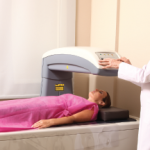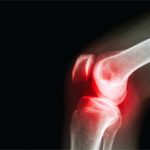 ACR CONVERGENCE 2020—Attention to bone health in people at risk of developing, or who already have, osteoporosis is essential to reduce their increased risk for fragility fractures. Major risk factors for osteoporosis include being female, white, of small frame and having a family history of osteoporosis, as well as having secondary causes of osteoporosis, such as inflammatory disease and corticosteroid use.
ACR CONVERGENCE 2020—Attention to bone health in people at risk of developing, or who already have, osteoporosis is essential to reduce their increased risk for fragility fractures. Major risk factors for osteoporosis include being female, white, of small frame and having a family history of osteoporosis, as well as having secondary causes of osteoporosis, such as inflammatory disease and corticosteroid use.
Although these factors cannot be modified, other risk factors can, including obesity, smoking, poor diet and inadequate physical activity.
In a session titled Down & Dirty 30: Therapeutic Exercise for Bone Health, Laura D. Bilek, PT, PhD, associate dean for research and recipient of the Karen Linder Distinguished Professorship for Women’s Health at the University of Nebraska Medical Center, Omaha, focused on the importance of physical activity on bone health and provided clinicians with an overview of the current evidence regarding therapeutic exercise for bone health in three at-risk populations. Those three groups include premenopausal women at risk of developing osteoporosis, post-menopausal women with low bone mass and people with osteoporosis.
At-Risk Premenopausal Women
Dr. Bilek presented the most current evidence on the effects of impact exercise and resistance training on bone health in the femoral neck and lumbar spine areas in premenopausal women. Results from a meta-analysis by Babatunde et al. showed that brief, high-impact exercise had a positive effect on bone mineral density (BMD) at the hip, but not at the lumbar spine, and results from a meta-analysis by Martyn-St James et al. showed that resistance training had no effect on BMD at the hip, but a positive effect on the lumbar spine.1,2
Based on these studies, Dr. Bilek emphasized that to maintain their bone health, premenopausal women at risk of, but not yet with, osteoporosis should lift weights and engage in brief high-impact exercises in which their legs meet the ground, such as jumping rope, lunges, calisthenics, hiking, stair climbing and step exercise classes.
Dr. Bilek stressed the evidence does not support all types of walking as beneficial for bone health, only hiking that requires walking over uneven terrain.
For resistance training, she emphasized the need to focus on strengthening all major muscle groups in the body, with either machines or free weights; the latter are slightly more effective, but potentially riskier. Overall, she said to focus on using high loads and low reps and recommended applying overload by slowly progressing resistance until a person can lift the weight only eight to 12 times before reaching volitional fatigue.
Regarding the number of sets and frequency, she emphasized that the most benefit (about 70%) comes from the first set. She tends to recommend two sets, she said, with a goal of three times a week. However, if people are short on time, she said performing one set twice a week still provides benefit.
She also emphasized the need to counsel patients about what not to do. “Movement to avoid is movement [that risks] a lumbar disc herniation,” she said, such as trunk flexion, especially with twisting and picking up even just a light weight. “This type of movement can cause a vertebral compression fracture for those at risk.”
 Post-Menopausal Women
Post-Menopausal Women
For post-menopausal women, evidence supports the use of an exercise program that combines impact exercise with resistance training, with studies showing a benefit of this combined approach on maintaining bone both at the hip and lumbar spine.3 The same type of exercises recommended for premenopausal women are recommended in postmenopausal women, Dr. Bilek said, with the goal of preventing a decline in bone health.
People with Osteoporosis
Dr. Bilek stressed that people with osteoporosis are at higher risk of incurring a vertebral compression fracture, and therefore, their exercises should focus on strengthening the posterior thoracic musculature and altering exercise to prevent trunk flexion with overload.4
High-impact exercises should be eliminated, she said, although lunges and step classes are fine if performed safely and correctly. For example, the correct way to lunge is to use the hip muscles to support your body weight. When doing step exercises, you need good lower leg biomechanics to strengthen the muscles.
For resistance training, people with osteoporosis should work on strengthening all muscle groups similar to the recommendations for pre- and post-menopausal women, but the intensity should be altered based on risk as measured by T-score, fracture history, the presence of inflammatory disease and other factors.
Dr. Bilek cautioned, however, that women with more severe osteoporosis should seek guidance on exercise from a physical therapist or other skilled provider.
Mary Beth Nierengarten is a freelance medical journalist based in Minneapolis.
References
- Babatunde OO, Forsyth JJ, Gidlow CJ. A meta-analysis of brief high-impact exercises for enhancing bone health in premenopausal women. Osteoporos Int. 2012 Jan;23(1):109–119.
- Martyn-St James M, Carroll S. Progressive high-intensity resistance training and bone mineral density changes among premenopausal women: Evidence of discordant site-specific skeletal effects. Sports Med. 2006;36(8):683–704.
- Zhao R, Zhang M, Zhang Q. The effectiveness of combined exercise interventions for preventing postmenopausal bone loss: A systematic review and meta-analysis. J Orthop Sports Phys Ther. 2017 Apr;47(4):241–251.
- Giangregorio L, Katzman WB. Exercise and other physical therapy interventions in the management of osteoporosis. In Dempster DW, Bouxsein ML, Cauley JA, Cosman F (eds.). Marcus and Feldman’s Osteoporosis (fifth edition, chapter 69).


